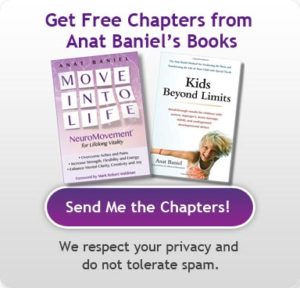Following is an excerpted version of the original question that we received:
How do developmental stages fit into the ABM approach?
My question stems from wondering if ABM is what my daughter needs. What I’m trying to get my head around is: what is the difference between what my kiddo’s brain will pick up this time that it didn’t the first time around….as in when she was going thru the stages: sitting up, crawling, walking? Has she likely built everything on a shaky foundation? I’m trying to understand that if it didn’t work then, why would it now? It is easier for me to understand that a child born with a part of their brain missing (Elizabeth) needs extra helps to reroute and create neuro pathways….but why a child that seemed perfectly “normal” until about 7 years old?
Answer
When we work with children (and also adults) we do not try to take them through developmental stages. (Read: Developmental Milestones: Every Child’s Path of Development Is Unique)
We look for where the brain has not differentiated and formed itself as fully as it can, and what it needs in order to perform well.
So, what we look for is how to turn on the child’s (or adult’s) Learning Switch and have the brain create the necessary connections to do better what the child (or the adult) cannot do at present.
For example, I have worked with adults who are the CEOs of a large companies who are successful, have families, and have lots of friends (i.e., very high functioning people), but they may have lower back pain or simply want to improve their golf game. I am not going to take this person through childhood developmental stages. But I can look at this person and see what elements are missing for her/him that will open the possibility to get rid of the back pain or become a better golfer.
It is the same thing with any child. And, by the way, all children need an enormous amount of input and an intelligent adult environment to grow successfully. (Learn more: For Children: NeuroMovement for Any Age and Ability.)
No one needs to have a diagnosable problem in order to be able to do a whole lot better. The way that Elizabeth’s brain worked is no different than the way that everyone’s brain works. She just needed help to get her brain to do its job as fully as it needed to.
In practical terms, if you can find an ABM NeuroMovement Practitioner certified in working with children, or come to our ABM Center in California, the biggest risk you take is that your child is not going to get better. (Because our work is so gentle, there is pretty much no risk of things getting worse.) And most likely, she will benefit.
If you want to learn more about private sessions at our ABM Center, please contact our scheduling coordinator Dalit at scheduling@anatbanielmethod.com.
If you want to learn more about our ABM Center Practitioners or find an ABM Practitioner in your area, please go to www.anatbanielmethod.com/find-practitioner.

